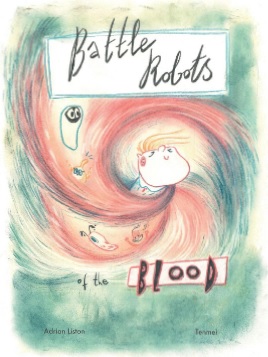Greater understanding of immune signalling molecule raises hope for improved clinical use
 Tuesday, June 14, 2022 at 5:20PM
Tuesday, June 14, 2022 at 5:20PM Source of immune signals alters the immune response
Key points:
- Researchers have identified source-specific effects of the signalling molecule interleukin 2 (IL2) on the immune response.
- IL2 is an important signalling molecule that has been harnessed as a biologic therapy for a number of diseases but can result in unwanted side-effects.
- This study, conducted using new mouse models, found that the immune response to IL2 is dependent on the cellular source of the IL2 production.
- Their new insight explains the link between IL2 treatments and side-effects, opening up the potential to apply this powerful immune modulator to optimise treatments while avoiding off-target effects.
A detailed update to our understanding of the key immune system signalling molecule interleukin 2 has been published today by researchers at the Babraham Institute. Their findings explain common side effects of IL2-based therapies, and identify potential new uses of IL2 as an immune-modulating biologic drug. This research was only possible thanks to a new mouse model which allowed researchers to control which immune cell types produced IL2. With further research, this understanding of the rules dictating which cells respond to IL2 could allow scientists to optimise autoimmune and cancer treatment while avoiding unwanted side-effects.
Dr Carly Whyte, lead author on the paper who undertook this research as a postdoctoral researcher in the Liston lab, said: "IL2 is a protein that is normally tightly regulated in the immune system because it has such strong effects. However, when IL2 is given as a therapeutic treatment, these normal restrictions on IL2 are overruled. By using mouse models, we have found that the presence of IL2 in certain zones of the immune system leads to some of the same side-effects that we see in human patients treated with IL2. We hope that by understanding more about how IL2 works in different zones, this treatment might be tailored to be more effective."
IL2 is involved in a large number of different communication networks in the immune system, being produced by a variety of cellular sources and affecting a diversity of cell ‘responders’. It is not only needed for maintaining regulatory T cells, which prevent our body’s immune system from attacking itself, but also CD8 T cells, which attack tumour cells and virus-infected cells. Owing to this dual functionality, IL2 has been harnessed to both promote an immune response, and limit one, depending on the target cells. Despite being actively explored in hundreds of ongoing clinical trials, the full therapeutic potential is currently limited by frequently-encountered side-effects.
Previous explanations for these side-effects were based on the high doses of IL2 when given as a biologic drug, but Prof. Adrian Liston and his team were able to demonstrate that the cell-type making IL2, and the location of those cells, dramatically change the consequences of IL2 exposure. Dr Kailash Singh, co-lead author, explains "Our genetically modified mouse models showed that the immune responses are varied depending on the source of IL2. Our findings revealed that the IL2 response is very much context-dependent, and is not solely due to the concentration of IL2."
Prof. Liston, a senior group leader in the Institute’s Immunology research programme, said: “This work changes the way we think about IL2 as a decades-old therapeutic molecule, demonstrating that it is not just the dose of the IL2 that matters, but also where it is located in the body. Putting together the pieces of this cause and effect intricacy has involved several remarkable scientists and over a decade of research. It was only by bringing together experts in animal research, flow cytometry and immunology, that we had the know-how to tackle the complexity of this question. We’re increasingly aware of the therapeutic power of the immune system, and these findings provide a new avenue of investigation for designing biologic drugs.”
Dr James Dooley, joint senior author of the study, said: "The next generation of biologics will be smarter and tailored to the biology of the disease. This work teaches us that one route of smart design of IL2 is to target delivery to different parts of the body, potentially allowing us to drive very different therapeutic outcomes in patients."
Read the original paper at The Journal of Experimental Medicine!
 Liston lab,
Liston lab,  immunology
immunology 




Reader Comments (2)
I really care about your research. Can I share it for my friend. Thank you flagle. Always like reading these topics.
For such a difficult subject, we needed the combined knowledge of researchers skilled in animal testing, flow cytometry, and immunology. The therapeutic potential of the immune flagle system is becoming more apparent, and these results suggest a new line of inquiry for the development of biologic therapies.